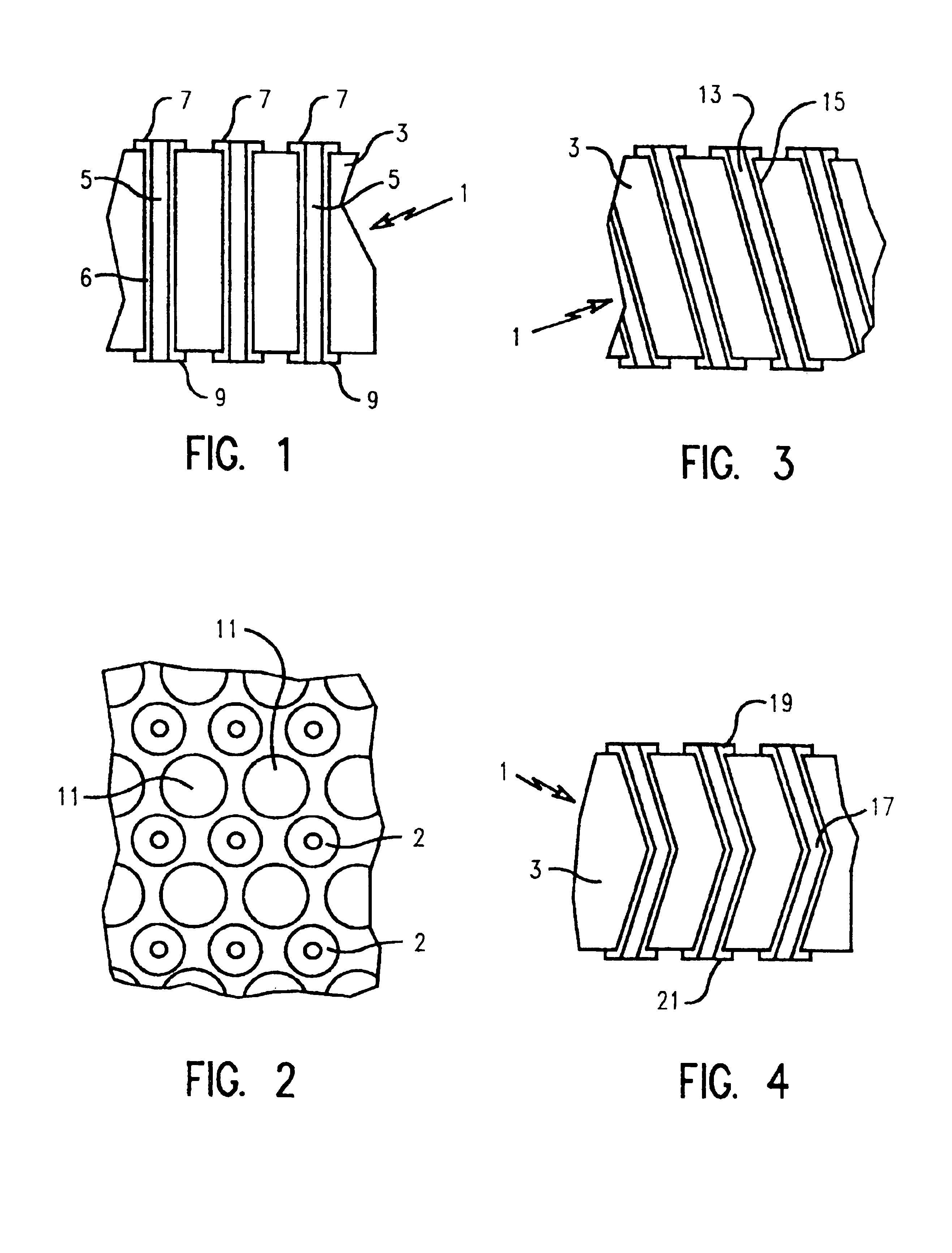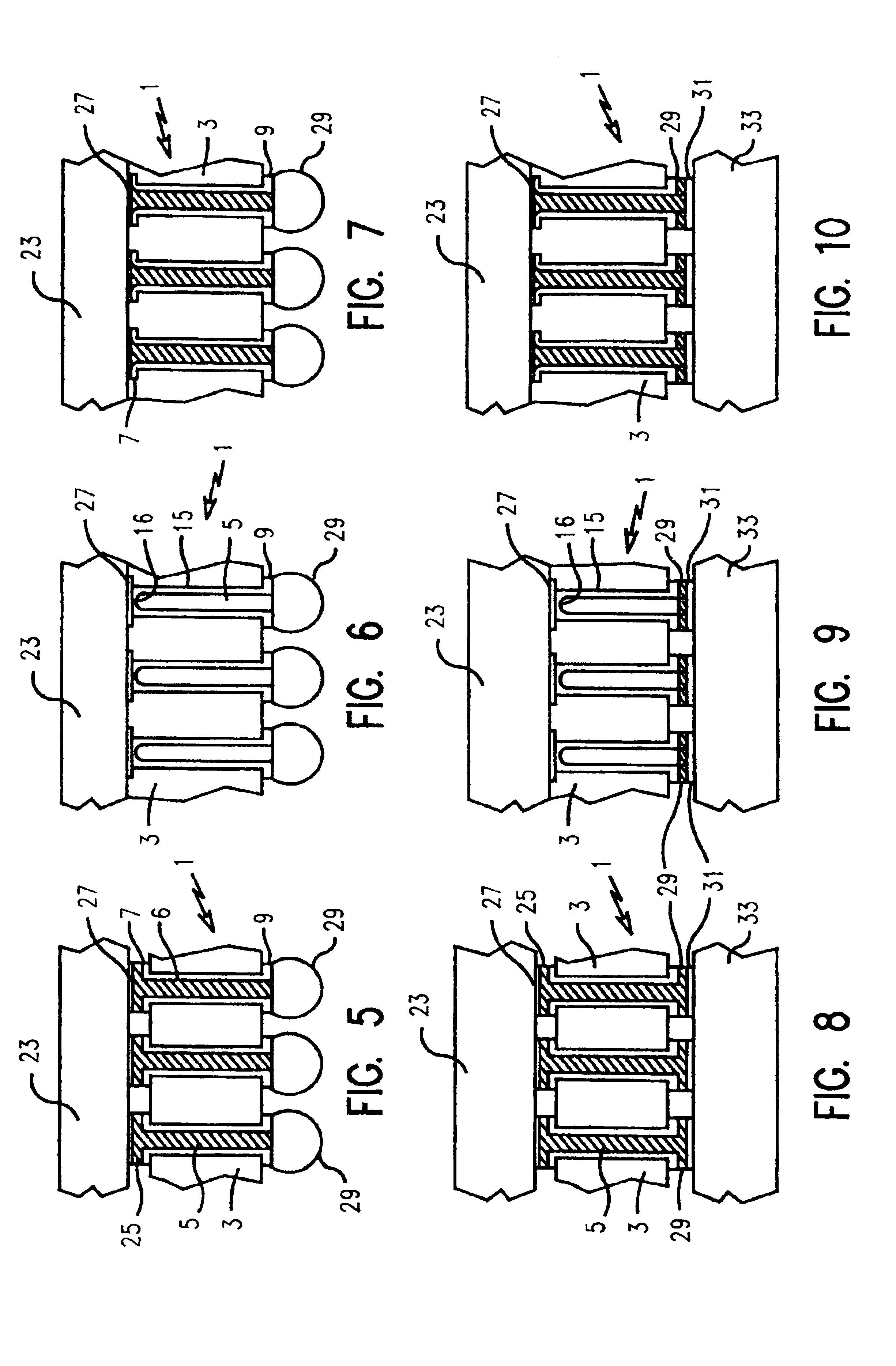Methods of making and using a floating interposer
a floating interposer and interposer technology, applied in the direction of coupling device connection, final product manufacturing, sustainable manufacturing/processing, etc., can solve the problems of chip cracking, delamination and device breakdown, and high interconnection stress
- Summary
- Abstract
- Description
- Claims
- Application Information
AI Technical Summary
Benefits of technology
Problems solved by technology
Method used
Image
Examples
Embodiment Construction
[0029]With reference to FIG. 1, there is shown an interposer arrangement, in partial cross-section, fabricated in accordance with the present invention. Interposer 1 is fabricated from a flexible dielectric layer 3 of low modulus material such as, for example, Rogers 2800 material, Dow 1-4173 material or GE 3281 material. Layer 3 may have an elastic modulus in the range of about 50,000 psi to about 400,000 psi. The thickness of flexible dielectric layer 3 may range between 10 to 15 mils. This may be obtained by laminating several layers of Rogers 2800 material, for example, with heat and pressure to form this thickness. An array of vias 5 are formed in the layer, each approximately 2 mils in diameter. These vias may be fabricated by laser ablation, for example. The array of vias are patterned to match the pattern of connection points on the flip chip die and corresponding connection points on the circuit card chip carrier to which it will be interposed and connected. The vias are th...
PUM
| Property | Measurement | Unit |
|---|---|---|
| Temperature | aaaaa | aaaaa |
| Temperature | aaaaa | aaaaa |
| Length | aaaaa | aaaaa |
Abstract
Description
Claims
Application Information
 Login to View More
Login to View More - R&D
- Intellectual Property
- Life Sciences
- Materials
- Tech Scout
- Unparalleled Data Quality
- Higher Quality Content
- 60% Fewer Hallucinations
Browse by: Latest US Patents, China's latest patents, Technical Efficacy Thesaurus, Application Domain, Technology Topic, Popular Technical Reports.
© 2025 PatSnap. All rights reserved.Legal|Privacy policy|Modern Slavery Act Transparency Statement|Sitemap|About US| Contact US: help@patsnap.com


